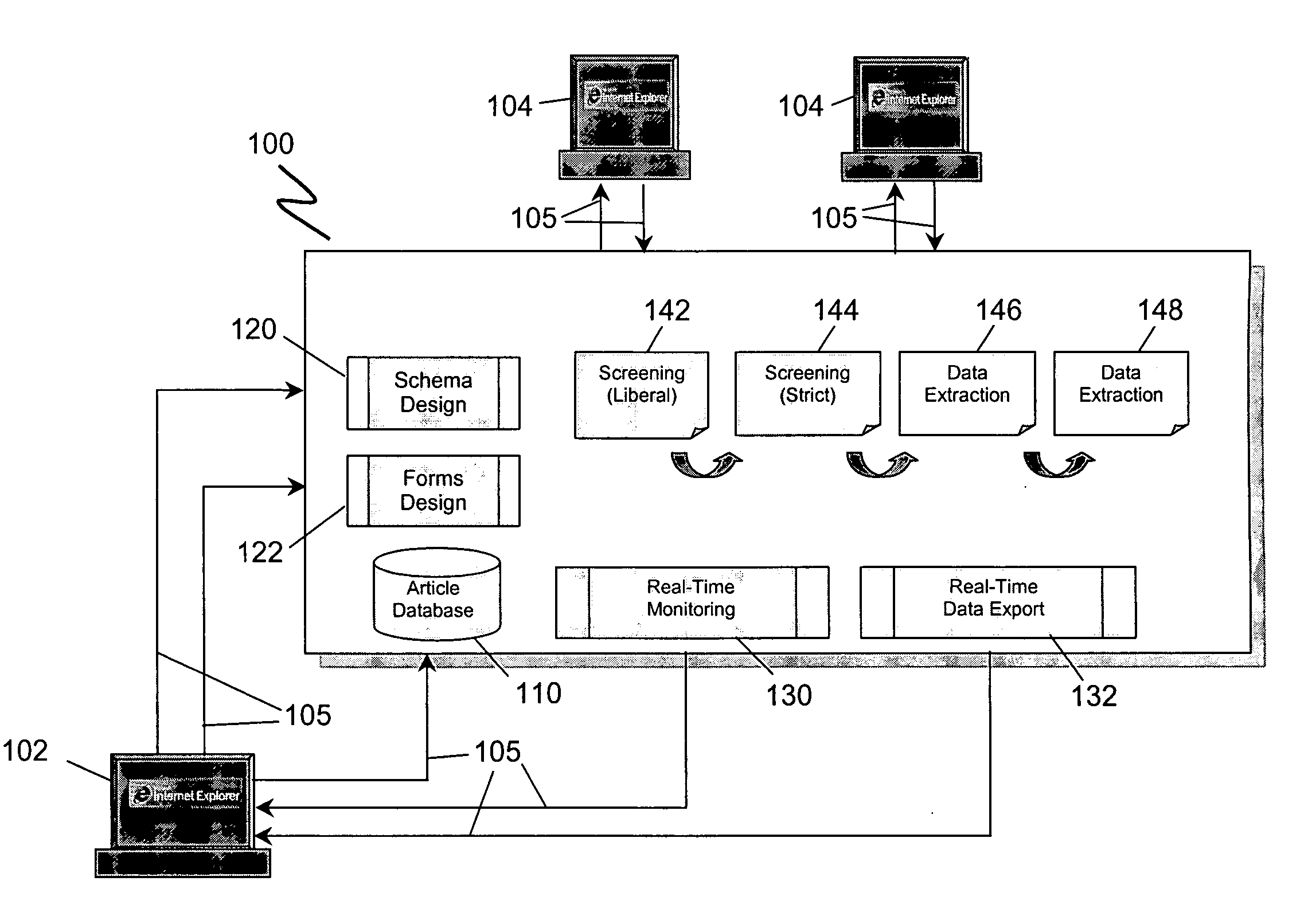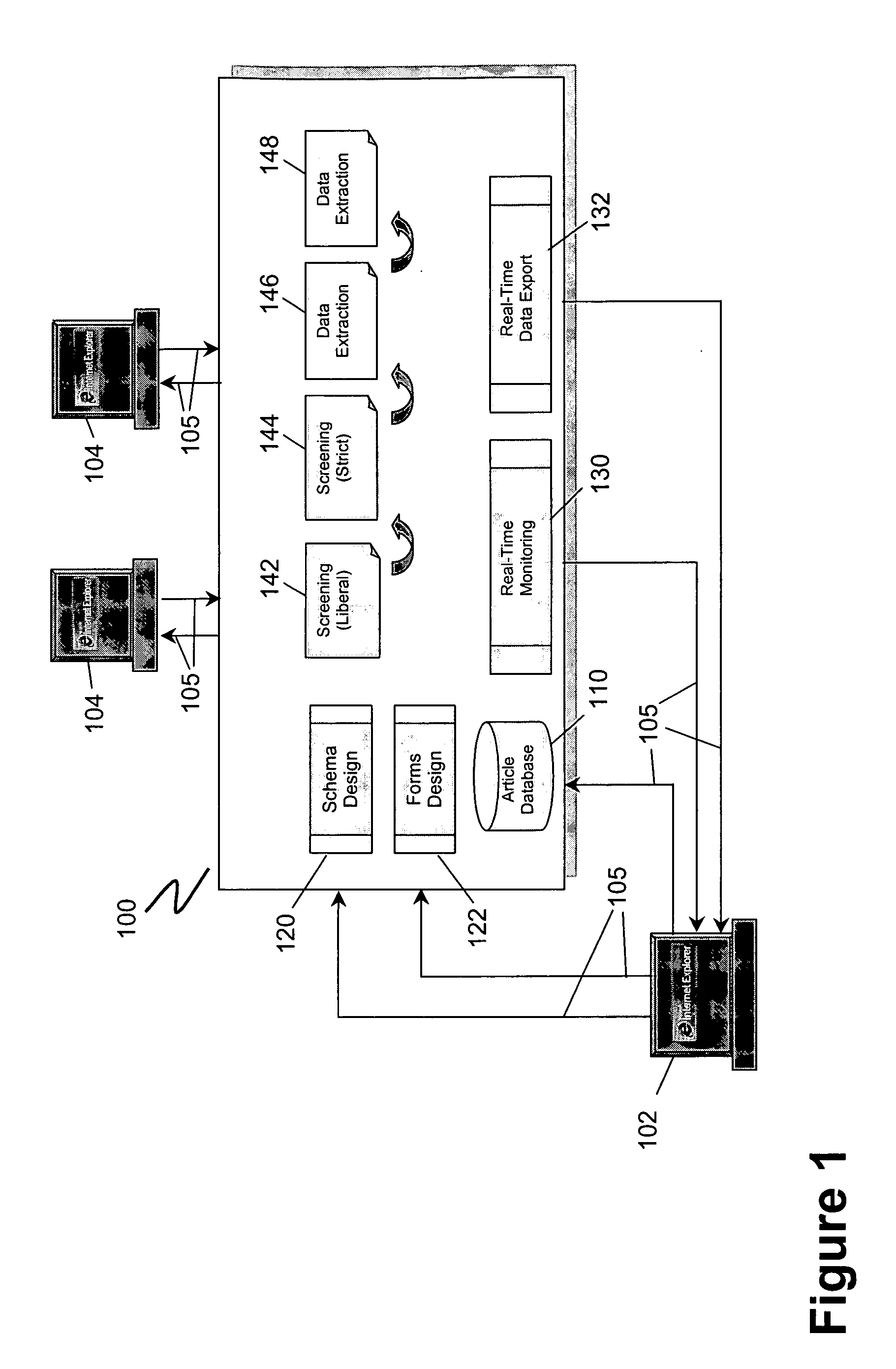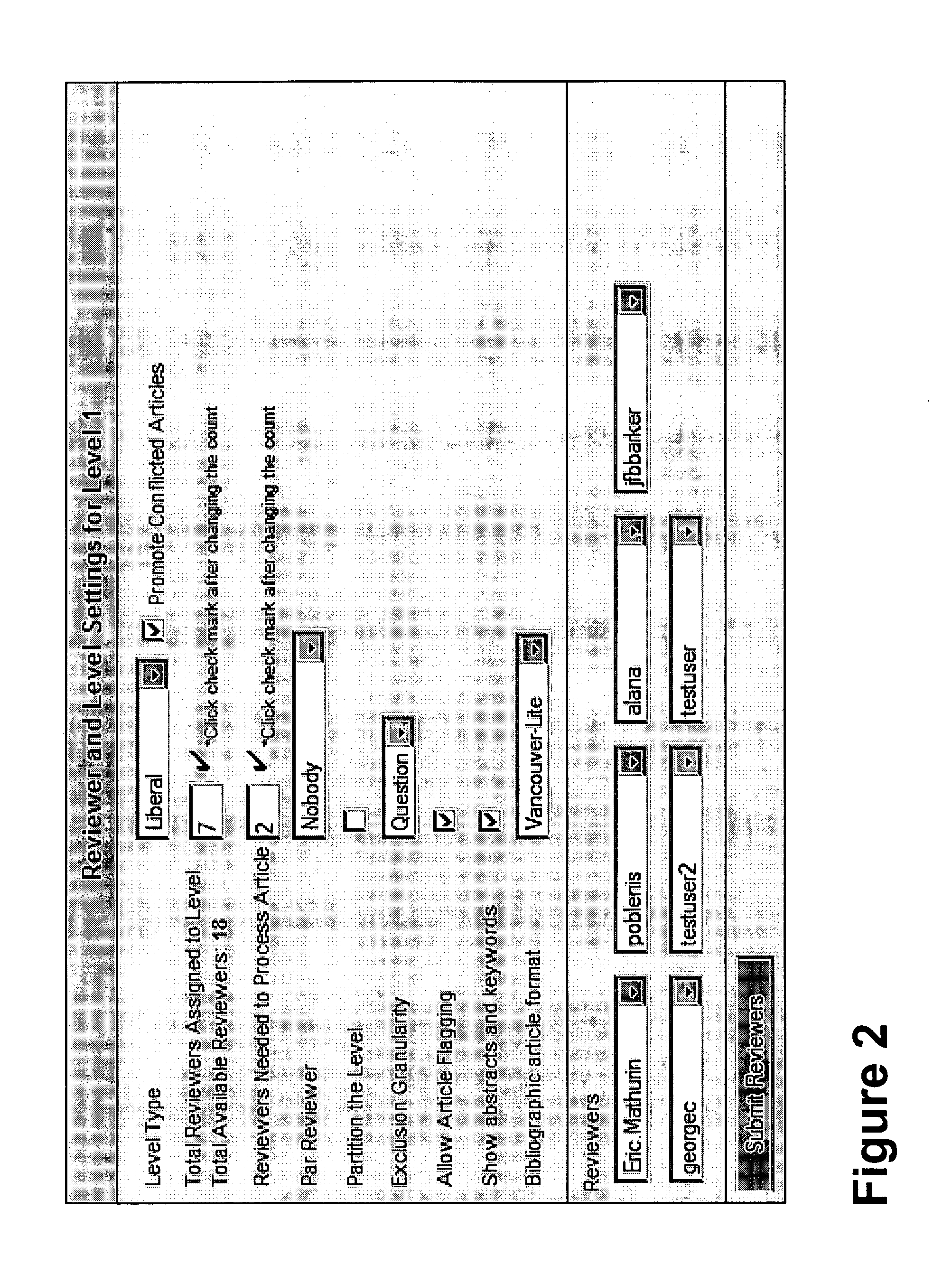Systematic review system
a review system and system technology, applied in the field of systematic review system, can solve the problems of waste of the study cost, errors in the manual methods by which these protocols are carried out, and errors in the review process that may have extremely serious consequences
- Summary
- Abstract
- Description
- Claims
- Application Information
AI Technical Summary
Benefits of technology
Problems solved by technology
Method used
Image
Examples
example 1
A typical Screening Question with Response Consequences
[0064] Was this study an RCT?[0065] Yes (Inclusion) [0066] No (Exclusion) [0067] Can't Tell (Inclusion or Neutral)
[0068] In the above question, if reviewers selected the “Yes” response then, based on this question, the article should remain in the study. If they unanimously answered “No” then the article should be removed from the study. If reviewers indicated can't tell, the action taken will depend on the level type and configuration (see ESR Level Types below).
[0069] ESR Level Types
[0070] ESR levels contain the study instruments used in a review and there is one form per level. Levels also embody the algorithms for determining how to process articles based on reviewer input. These algorithms are applied to articles to either promote or exclude them based on reviewer response to a form.
[0071] ESRs define three basic level types:
[0072] Liberal Screening: Liberal screening is typically the first level of screening. It is u...
PUM
 Login to View More
Login to View More Abstract
Description
Claims
Application Information
 Login to View More
Login to View More - R&D
- Intellectual Property
- Life Sciences
- Materials
- Tech Scout
- Unparalleled Data Quality
- Higher Quality Content
- 60% Fewer Hallucinations
Browse by: Latest US Patents, China's latest patents, Technical Efficacy Thesaurus, Application Domain, Technology Topic, Popular Technical Reports.
© 2025 PatSnap. All rights reserved.Legal|Privacy policy|Modern Slavery Act Transparency Statement|Sitemap|About US| Contact US: help@patsnap.com



